

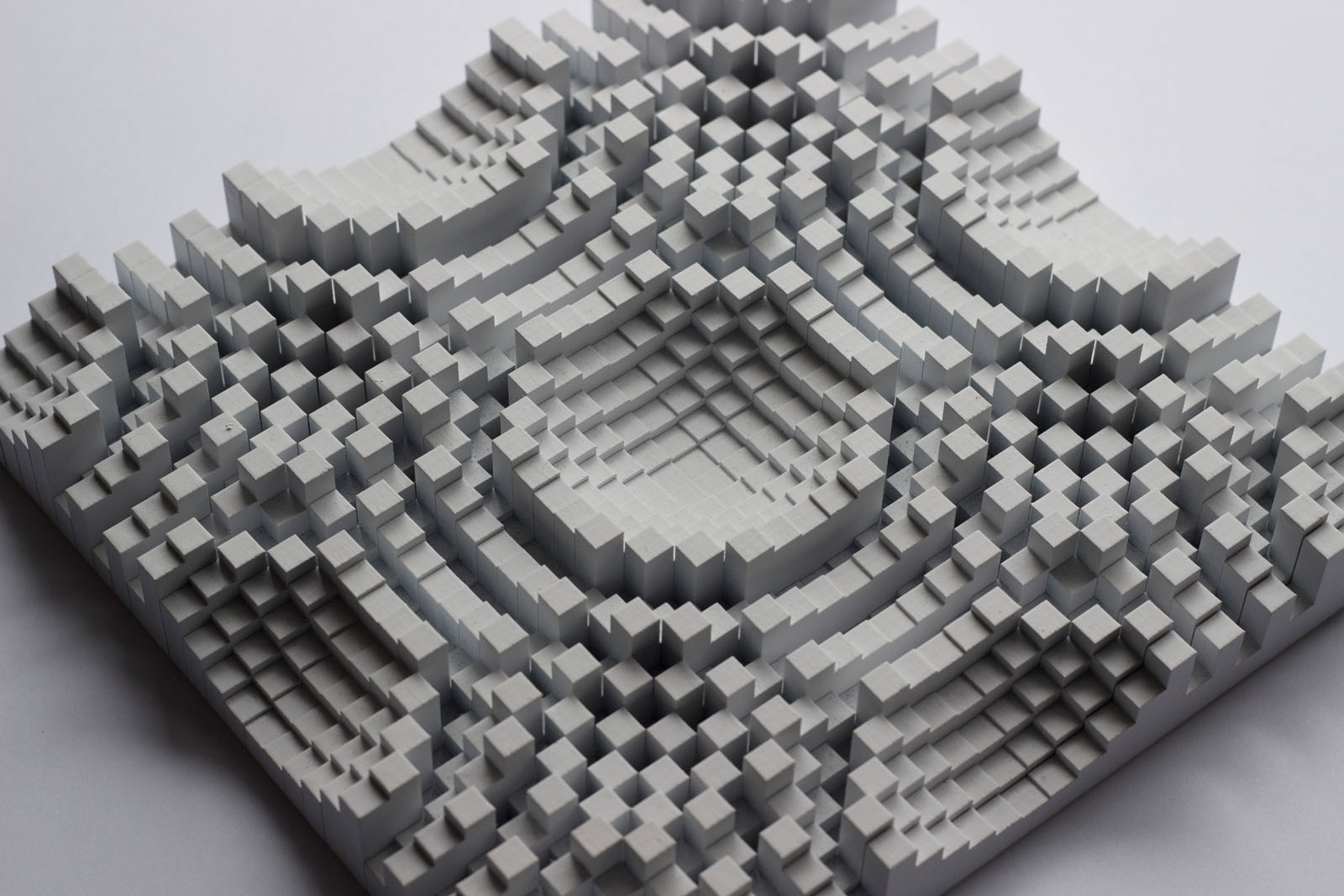
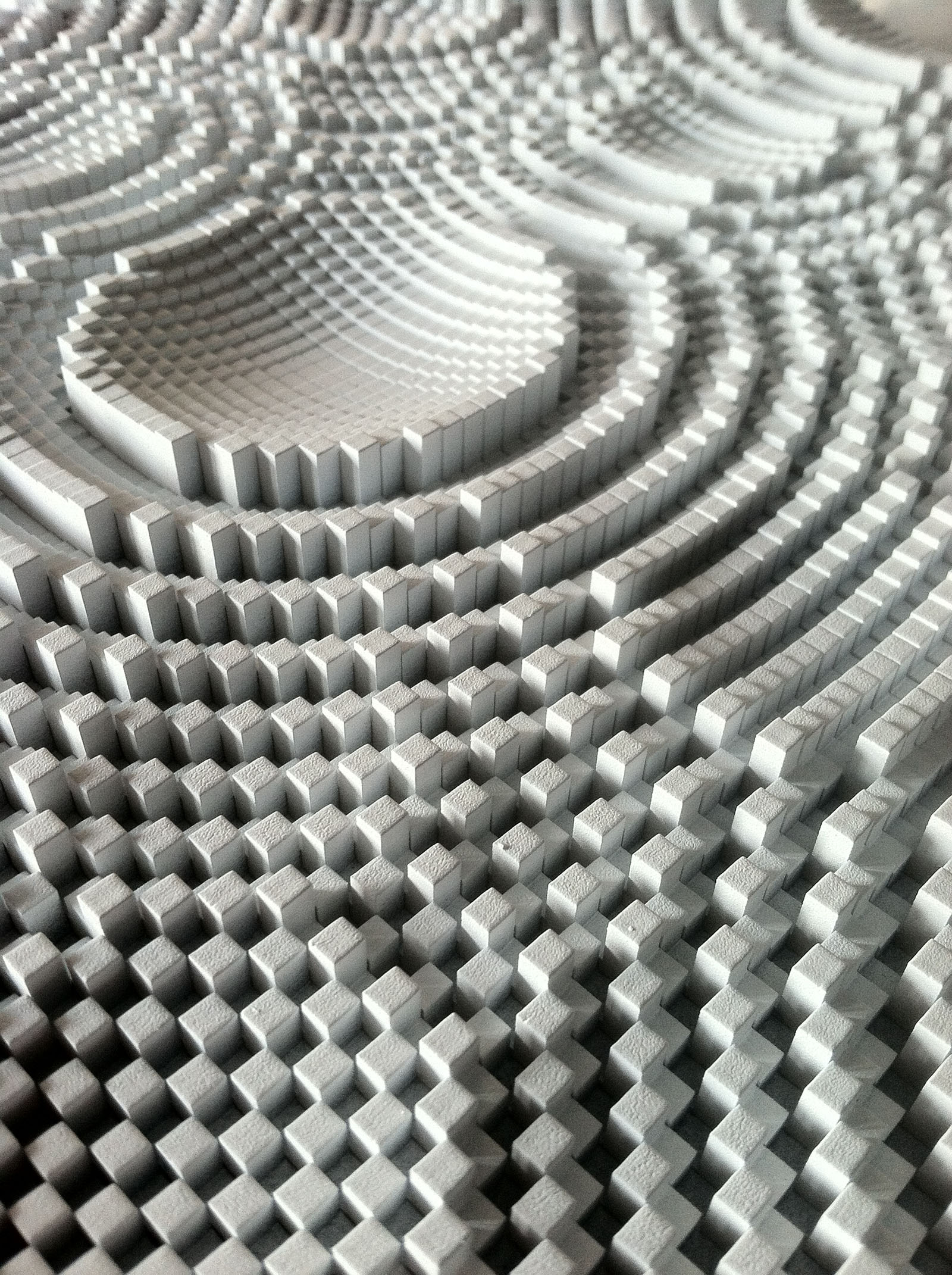
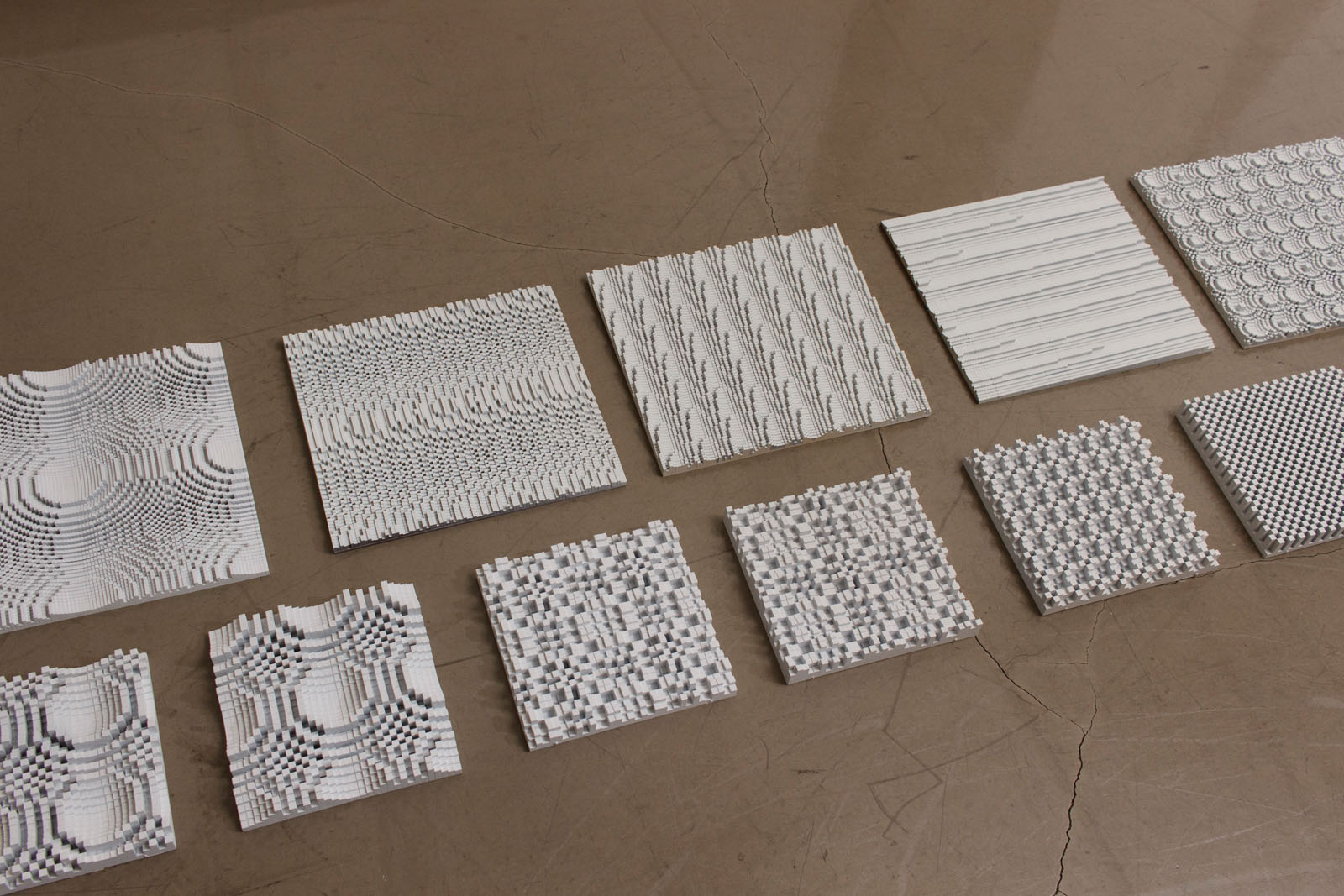
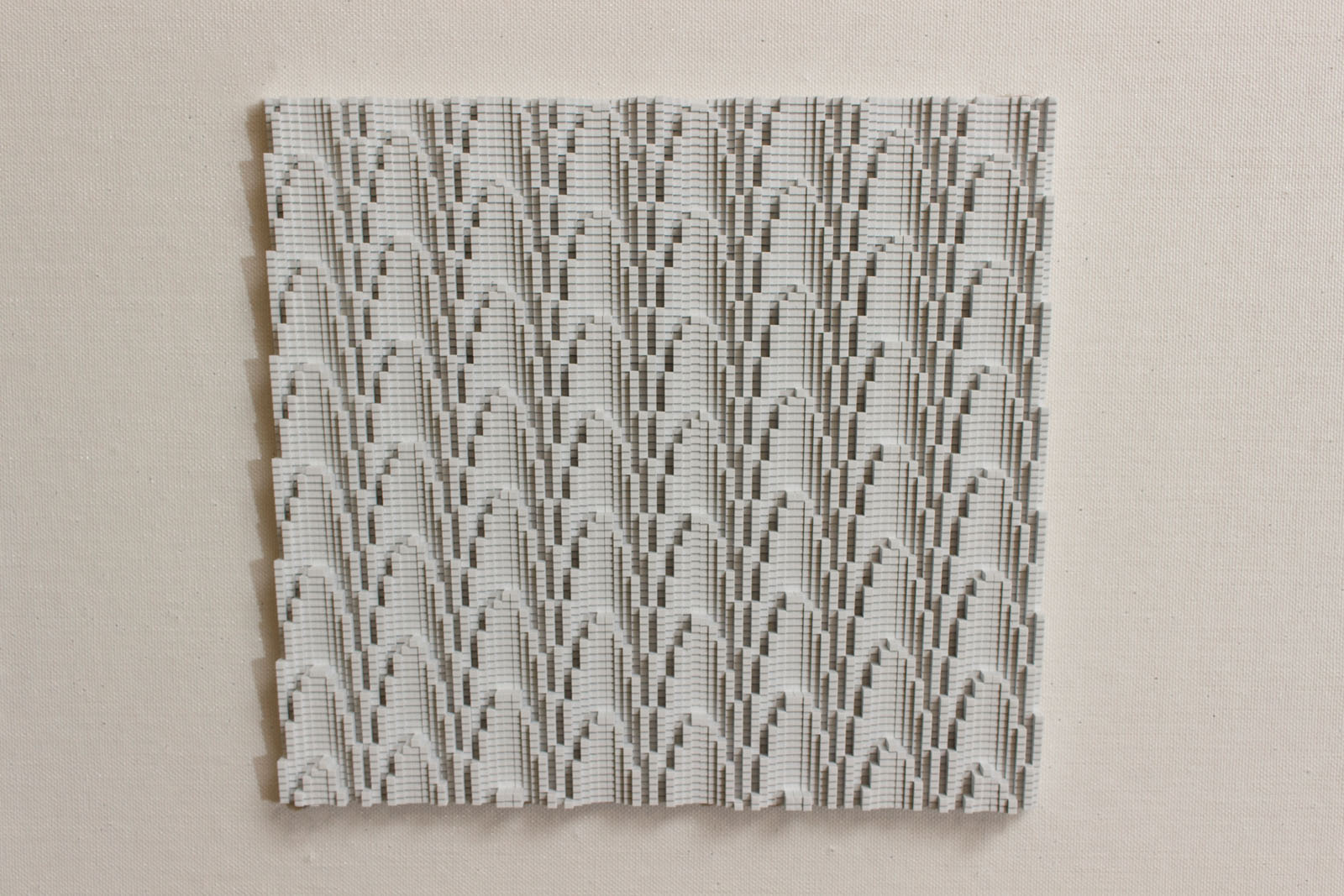
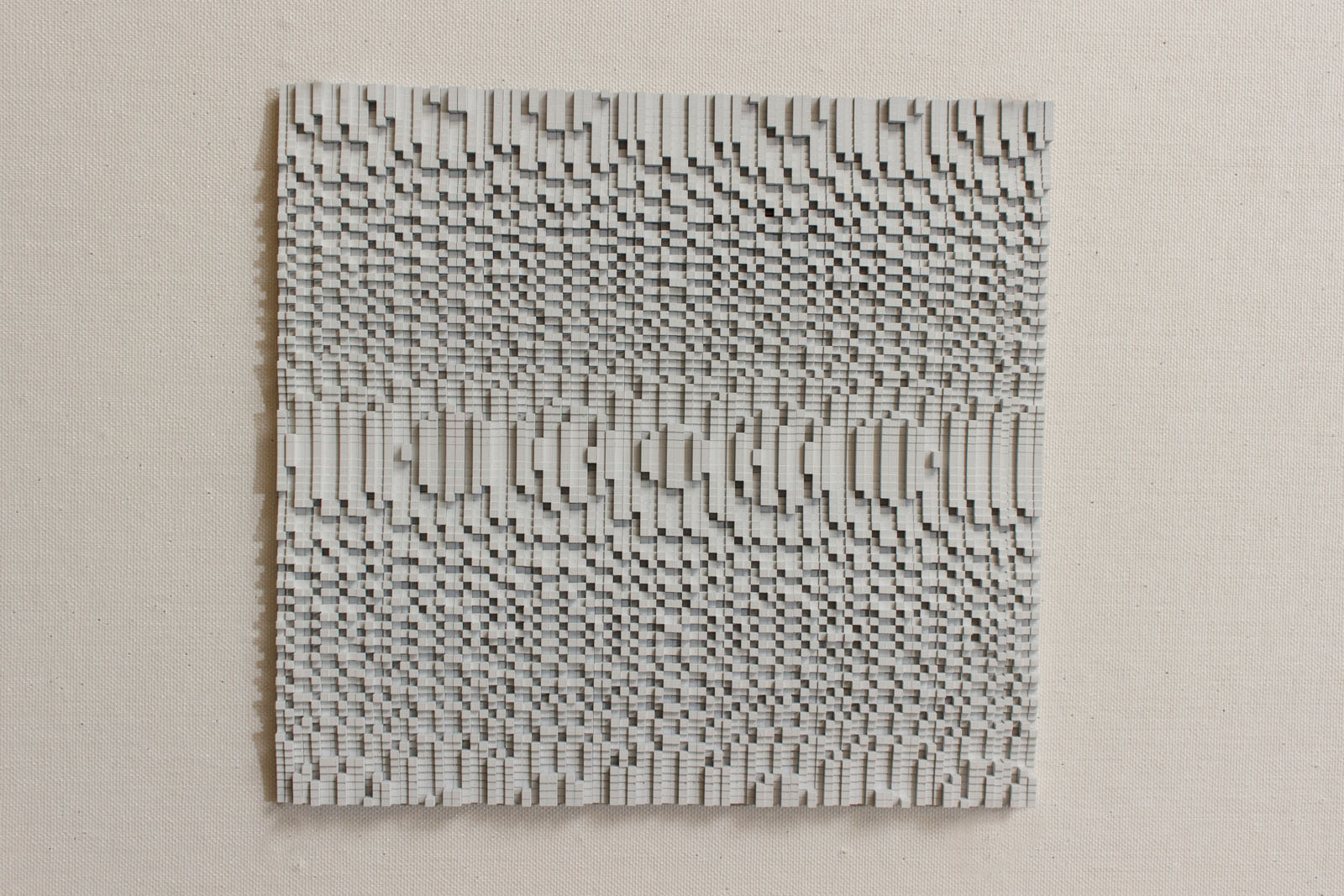
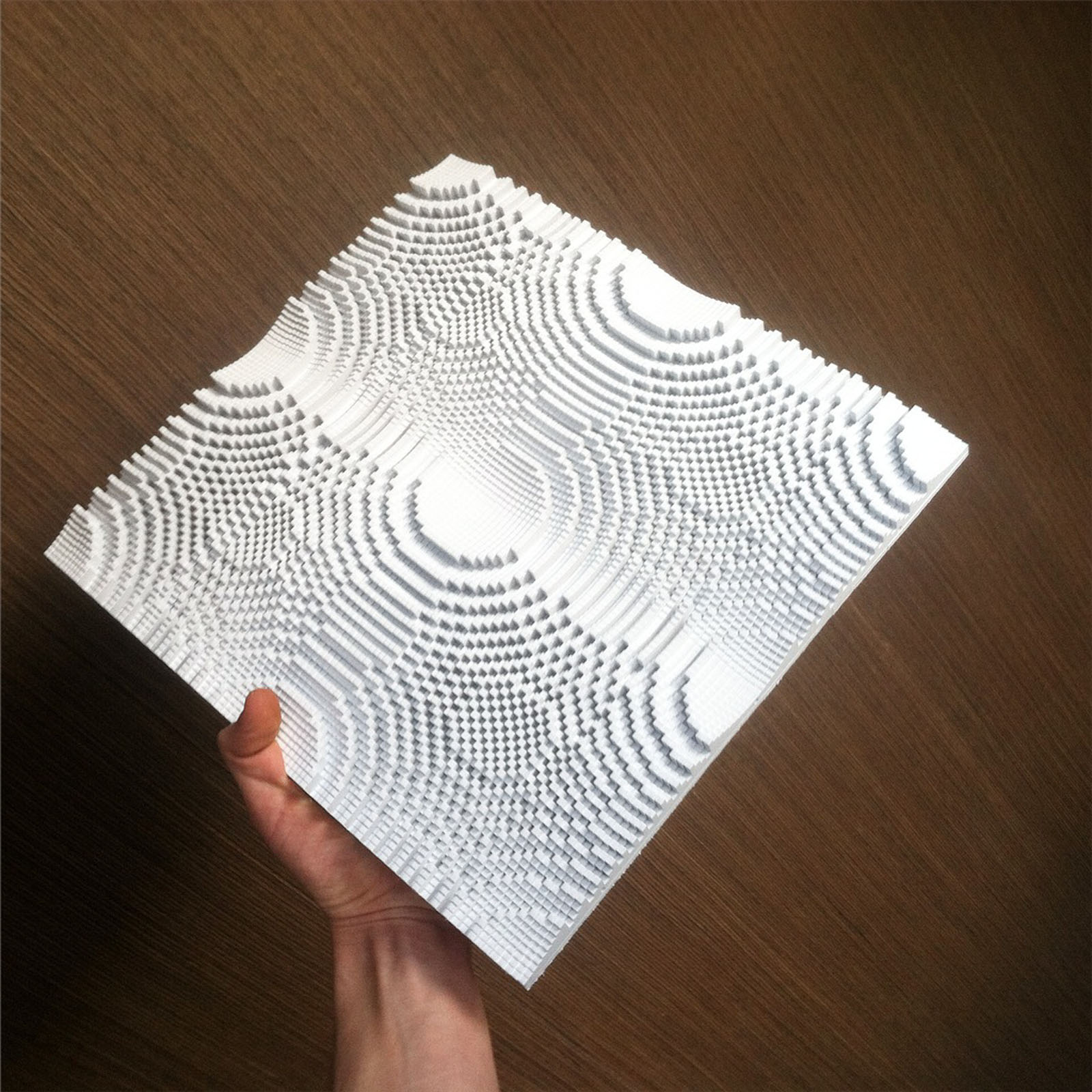
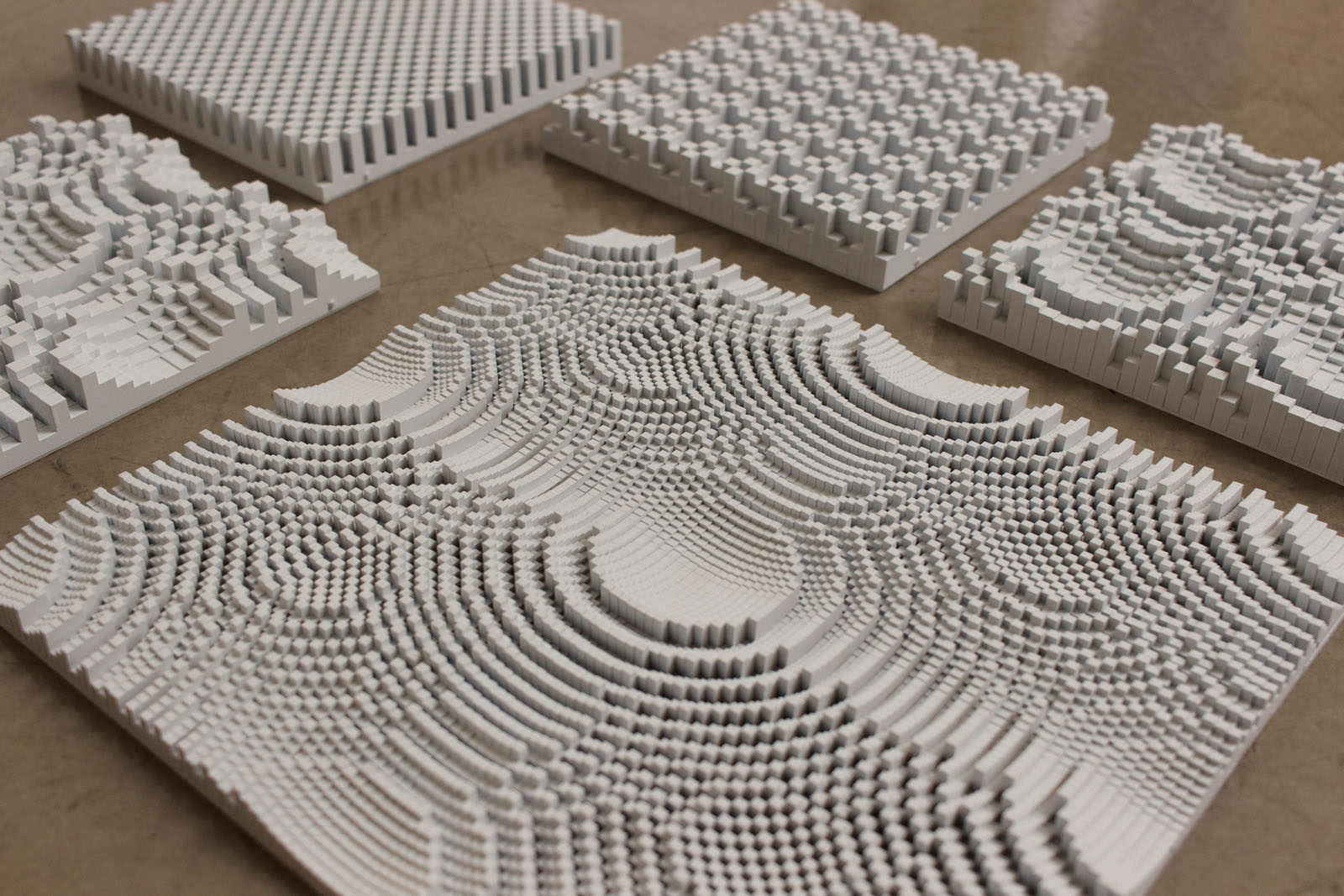
03.09.16
We work on a lot of auditoria, theaters, and lecture halls—spaces where acoustics are paramount. Between education and performing arts, much of the work we do involves optimizing an audial connection in large spaces full of excited people. We’re always thinking about how to do it better, but sometimes you have to make study opportunities for yourself instead of waiting for a project to ask you just the right questions. Our investigation into acoustic diffusion was sparked while designing an auditorium for a local school and grew from an examination of the types of acoustic surfaces typically used to tune and temper the walls and ceilings of performance spaces.
In addition to the overall geometry of the room, the properties of these surfaces play an important role in how sound bounces around and within a space. In general, these surfaces are categorized based on how sound interacts with them and fall under three general headings — reflective, absorptive and diffusive. If you think of a spectrum of sound interaction, reflection and absorption occupy either end with diffusion falling somewhere in the middle.
Diffusion is intended to contribute to the enjoyment of a critical listening environment by disrupting the clarity of a sound while maintaining a sound’s energy. Its effect is a sense of spaciousness. In earlier auditoriums and theaters, diffusion occurred unsystematically through the use of ornament and decoration. As these spaces began to adopt clean lines and remove ornament, other architectural elements needed to be developed to take up the diffusive function.
This imprecise science of diffusion designs was transformed by physicist Manfred Schroeder who used number sequences to dictate the dimensions of diffuser panels. His Quadratic Residue Diffuser formula made it possible to verify and even optimize sound interaction rather than relying upon textures, ornament, and general architectural irregularities, all of which made predictions about success difficult.
Armed with custom algorithms based on the quadratic residue, we decided to fabricate some prototype acoustic panels. Three dimensional modeling extracted unique panel profiles, which were then cut from some sheet material, and by stacking all the profiles together in their proper order, the panel is completed.
Click here for a deeper dive into the process, and some more diagrams and formulas.